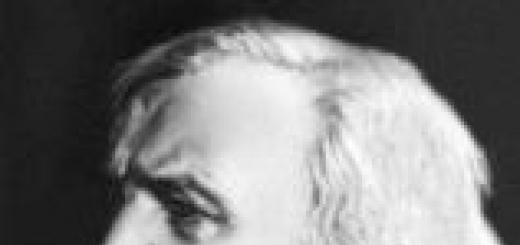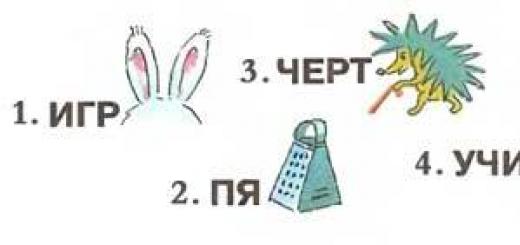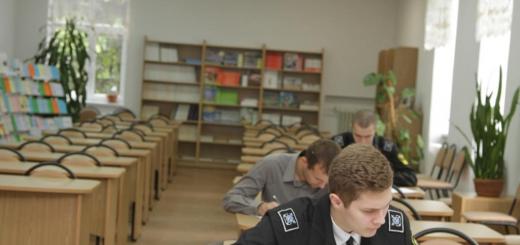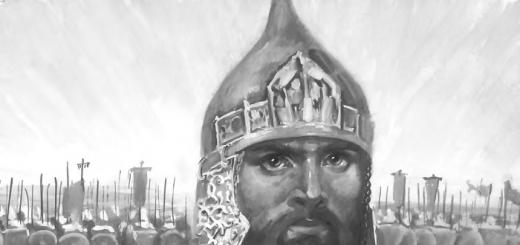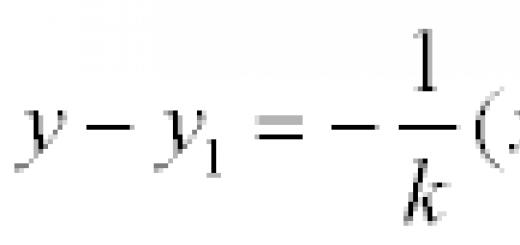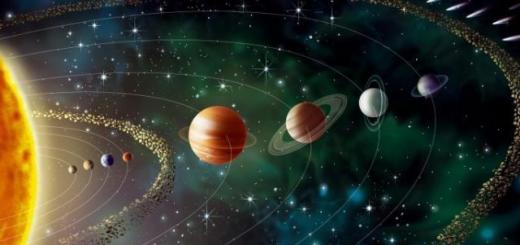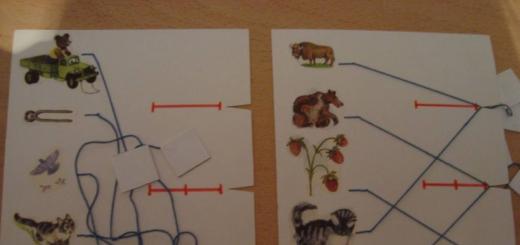Structure of alkanes
The chemical structure (the order of connection of atoms in molecules) of the simplest alkanes - methane, ethane and propane - is shown by their structural formulas given in section 2. From these formulas it is clear that there are two types of chemical bonds in alkanes:
S–S and S–N.
The C–C bond is covalent nonpolar. The C–H bond is covalent, weakly polar, because carbon and hydrogen are close in electronegativity (2.5 for carbon and 2.1 for hydrogen). The formation of covalent bonds in alkanes due to shared electron pairs of carbon and hydrogen atoms can be shown using electronic formulas:
Electronic and structural formulas reflect the chemical structure, but do not give an idea of the spatial structure of molecules, which significantly affects the properties of the substance.
Spatial structure, i.e. the relative arrangement of the atoms of a molecule in space depends on the direction of the atomic orbitals (AO) of these atoms. In hydrocarbons, the main role is played by the spatial orientation of the atomic orbitals of carbon, since the spherical 1s-AO of the hydrogen atom lacks a specific orientation.
The spatial arrangement of carbon AO, in turn, depends on the type of its hybridization (Part I, Section 4.3). The saturated carbon atom in alkanes is bonded to four other atoms. Therefore, its state corresponds to sp3 hybridization (Part I, section 4.3.1). In this case, each of the four sp3-hybrid carbon AOs participates in axial (σ-) overlap with the s-AO of hydrogen or with the sp3-AO of another carbon atom, forming σ-CH or C-C bonds.

The four σ-bonds of carbon are directed in space at an angle of 109°28", which corresponds to the least repulsion of electrons. Therefore, the molecule of the simplest representative of alkanes - methane CH4 - has the shape of a tetrahedron, in the center of which there is a carbon atom, and at the vertices there are hydrogen atoms:

The H-C-H bond angle is 109°28". The spatial structure of methane can be shown using volumetric (scale) and ball-and-stick models.
For recording, it is convenient to use a spatial (stereochemical) formula.

In the molecule of the next homologue, ethane C2H6, two tetrahedral sp3 carbon atoms form a more complex spatial structure:

Alkane molecules containing more than 2 carbon atoms are characterized by curved shapes. This can be shown using the example of n-butane (VRML model) or n-pentane:

Isomerism of alkanes
Isomerism is the phenomenon of the existence of compounds that have the same composition (same molecular formula), but different structures. Such connections are called isomers.
Differences in the order in which atoms are combined in molecules (i.e., chemical structure) lead to structural isomerism. The structure of structural isomers is reflected by structural formulas. In the series of alkanes, structural isomerism manifests itself when the chain contains 4 or more carbon atoms, i.e. starting with butane C 4 H 10. If in molecules of the same composition and the same chemical structure different relative positions of atoms in space are possible, then we observe spatial isomerism (stereoisomerism). In this case, the use of structural formulas is not enough and molecular models or special formulas - stereochemical (spatial) or projection - should be used.
Alkanes, starting with ethane H 3 C–CH 3, exist in various spatial forms ( conformations), caused by intramolecular rotation along C–C σ bonds, and exhibit the so-called rotational (conformational) isomerism.
In addition, if a molecule contains a carbon atom bonded to 4 different substituents, another type of spatial isomerism is possible, when two stereoisomers relate to each other as an object and its mirror image (similar to how the left hand relates to the right). Such differences in the structure of molecules are called optical isomerism.
. Structural isomerism of alkanes
Structural isomers are compounds of the same composition that differ in the order of bonding of atoms, i.e. chemical structure of molecules.
The reason for the manifestation of structural isomerism in the series of alkanes is the ability of carbon atoms to form chains of different structures. This type of structural isomerism is called carbon skeleton isomerism.
For example, an alkane of composition C 4 H 10 can exist in the form two structural isomers:

and alkane C 5 H 12 - in the form three structural isomers, differing in the structure of the carbon chain:

With an increase in the number of carbon atoms in the molecules, the possibilities for chain branching increase, i.e. the number of isomers increases with the number of carbon atoms.

Structural isomers differ in physical properties. Alkanes with a branched structure, due to the less dense packing of molecules and, accordingly, smaller intermolecular interactions, boil at a lower temperature than their unbranched isomers.
Techniques for constructing structural formulas of isomers
Let's look at the example of an alkane WITH 6 N 14 .
1. First, we depict the linear isomer molecule (its carbon skeleton)
2. Then we shorten the chain by 1 carbon atom and attach this atom to any carbon atom of the chain as a branch from it, excluding extreme positions:
(2) or (3)
If you attach a carbon atom to one of the extreme positions, the chemical structure of the chain does not change:
In addition, you need to ensure that there are no repetitions. Thus, the structure is identical to structure (2).
3. When all positions of the main chain have been exhausted, we shorten the chain by another 1 carbon atom:
Now there will be 2 carbon atoms in the side branches. The following combinations of atoms are possible here:
A side substituent can consist of 2 or more carbon atoms connected in series, but for hexane there are no isomers with such side branches, and the structure is identical to structure (3).
The side substituent - C-C can only be placed in a chain containing at least 5 carbon atoms and can only be attached to the 3rd and further atom from the end of the chain.
4. After constructing the carbon skeleton of the isomer, it is necessary to supplement all carbon atoms in the molecule with hydrogen bonds, given that carbon is tetravalent.
So, the composition WITH 6
N 14
corresponds to 5 isomers: 1) 2) ![]() 3)
3) ![]() 4)
4)  5)
5) 
DEFINITION
Alkanes are called saturated hydrocarbons, the molecules of which consist of carbon and hydrogen atoms connected to each other only by σ bonds.
Under normal conditions (at 25 o C and atmospheric pressure), the first four members of the homologous series of alkanes (C 1 - C 4) are gases. Normal alkanes from pentane to heptadecane (C 5 - C 17) are liquids, starting from C 18 and above are solids. As the relative molecular weight increases, the boiling and melting points of alkanes increase. With the same number of carbon atoms in the molecule, branched alkanes have lower boiling points than normal alkanes. The structure of the alkane molecule using methane as an example is shown in Fig. 1.
Rice. 1. The structure of the methane molecule.
Alkanes are practically insoluble in water, since their molecules are low-polar and do not interact with water molecules. Liquid alkanes mix easily with each other. They dissolve well in non-polar organic solvents such as benzene, carbon tetrachloride, diethyl ether, etc.
Preparation of alkanes
The main sources of various saturated hydrocarbons containing up to 40 carbon atoms are oil and natural gas. Alkanes with a small number of carbon atoms (1 - 10) can be isolated by fractional distillation of natural gas or the gasoline fraction of oil.
There are industrial (I) and laboratory (II) methods for producing alkanes.
C + H 2 → CH 4 (kat = Ni, t 0);
CO + 3H 2 → CH 4 + H 2 O (kat = Ni, t 0 = 200 - 300);
CO 2 + 4H 2 → CH 4 + 2H 2 O (kat, t 0).
— hydrogenation of unsaturated hydrocarbons
CH 3 -CH=CH 2 + H 2 →CH 3 -CH 2 -CH 3 (kat = Ni, t 0);
- reduction of haloalkanes
C 2 H 5 I + HI →C 2 H 6 + I 2 (t 0);
- alkaline melting reactions of salts of monobasic organic acids
C 2 H 5 -COONa + NaOH → C 2 H 6 + Na 2 CO 3 (t 0);
— interaction of haloalkanes with sodium metal (Wurtz reaction)
2C 2 H 5 Br + 2Na → CH 3 -CH 2 -CH 2 -CH 3 + 2NaBr;
— electrolysis of salts of monobasic organic acids
2C 2 H 5 COONa + 2H 2 O → H 2 + 2NaOH + C 4 H 10 + 2CO 2 ;
K(-): 2H 2 O + 2e → H 2 + 2OH - ;
A(+):2C 2 H 5 COO — -2e → 2C 2 H 5 COO + → 2C 2 H 5 + + 2CO 2 .
Chemical properties of alkanes
Alkanes are among the least reactive organic compounds, which is explained by their structure.
Alkanes under normal conditions do not react with concentrated acids, molten and concentrated alkalis, alkali metals, halogens (except fluorine), potassium permanganate and potassium dichromate in an acidic environment.
For alkanes, the most typical reactions are those that proceed by a radical mechanism. Homolytic cleavage of C-H and C-C bonds is energetically more favorable than their heterolytic cleavage.
Radical substitution reactions most easily occur at the tertiary carbon atom, then at the secondary carbon atom, and lastly at the primary carbon atom.
All chemical transformations of alkanes proceed with splitting:
1) C-H bonds
— halogenation (S R)
CH 4 + Cl 2 → CH 3 Cl + HCl ( hv);
CH 3 -CH 2 -CH 3 + Br 2 → CH 3 -CHBr-CH 3 + HBr ( hv).
- nitration (S R)
CH 3 -C(CH 3)H-CH 3 + HONO 2 (dilute) → CH 3 -C(NO 2)H-CH 3 + H 2 O (t 0).
— sulfochlorination (S R)
R-H + SO 2 + Cl 2 → RSO 2 Cl + HCl ( hv).
- dehydrogenation
CH 3 -CH 3 → CH 2 =CH 2 + H 2 (kat = Ni, t 0).
- dehydrocyclization
CH 3 (CH 2) 4 CH 3 → C 6 H 6 + 4H 2 (kat = Cr 2 O 3, t 0).
2) C-H and C-C bonds
- isomerization (intramolecular rearrangement)
CH 3 -CH 2 -CH 2 -CH 3 →CH 3 -C(CH 3)H-CH 3 (kat=AlCl 3, t 0).
- oxidation
2CH 3 -CH 2 -CH 2 -CH 3 + 5O 2 → 4CH 3 COOH + 2H 2 O (t 0 , p);
C n H 2n+2 + (1.5n + 0.5) O 2 → nCO 2 + (n+1) H 2 O (t 0).
Applications of alkanes
Alkanes have found application in various industries. Let us consider in more detail, using the example of some representatives of the homologous series, as well as mixtures of alkanes.
Methane forms the raw material basis for the most important chemical industrial processes for the production of carbon and hydrogen, acetylene, oxygen-containing organic compounds - alcohols, aldehydes, acids. Propane is used as automobile fuel. Butane is used to produce butadiene, which is a raw material for the production of synthetic rubber.
A mixture of liquid and solid alkanes up to C 25, called Vaseline, is used in medicine as the basis of ointments. A mixture of solid alkanes C 18 - C 25 (paraffin) is used to impregnate various materials (paper, fabrics, wood) to give them hydrophobic properties, i.e. non-wetting with water. In medicine it is used for physiotherapeutic procedures (paraffin treatment).
Examples of problem solving
EXAMPLE 1
| Exercise | When chlorinating methane, 1.54 g of a compound was obtained, the vapor density of which in air is 5.31. Calculate the mass of manganese dioxide MnO 2 that will be required to produce chlorine if the ratio of the volumes of methane and chlorine introduced into the reaction is 1:2. |
| Solution | The ratio of the mass of a given gas to the mass of another gas taken in the same volume, at the same temperature and the same pressure is called the relative density of the first gas to the second. This value shows how many times the first gas is heavier or lighter than the second gas. The relative molecular weight of air is taken to be 29 (taking into account the content of nitrogen, oxygen and other gases in the air). It should be noted that the concept of “relative molecular mass of air” is used conditionally, since air is a mixture of gases. Let's find the molar mass of the gas formed during the chlorination of methane: M gas = 29 ×D air (gas) = 29 × 5.31 = 154 g/mol. This is carbon tetrachloride - CCl 4. Let's write the reaction equation and arrange the stoichiometric coefficients: CH 4 + 4Cl 2 = CCl 4 + 4HCl. Let's calculate the amount of carbon tetrachloride substance: n(CCl 4) = m(CCl 4) / M(CCl 4); n(CCl 4) = 1.54 / 154 = 0.01 mol. According to the reaction equation n(CCl 4) : n(CH 4) = 1: 1, which means n(CH 4) = n(CCl 4) = 0.01 mol. Then, the amount of chlorine substance should be equal to n(Cl 2) = 2 × 4 n(CH 4), i.e. n(Cl 2) = 8 × 0.01 = 0.08 mol. Let us write the reaction equation for the production of chlorine: MnO 2 + 4HCl = MnCl 2 + Cl 2 + 2H 2 O. The number of moles of manganese dioxide is 0.08 mol, because n(Cl 2) : n(MnO 2) = 1: 1. Find the mass of manganese dioxide: m(MnO 2) = n(MnO 2) × M(MnO 2); M(MnO 2) = Ar(Mn) + 2×Ar(O) = 55 + 2×16 = 87 g/mol; m(MnO 2) = 0.08 × 87 = 10.4 g. |
| Answer | The mass of manganese dioxide is 10.4 g. |
EXAMPLE 2
| Exercise | Determine the molecular formula of trichloroalkane, the mass fraction of chlorine in which is 72.20%. Draw up the structural formulas of all possible isomers and give the names of the substances according to the IUPAC substitutive nomenclature. |
| Answer | Let's write down the general formula of trichloroalkean: C n H 2 n -1 Cl 3 . According to the formula ω(Cl) = 3×Ar(Cl) / Mr(C n H 2 n -1 Cl 3) × 100% Let's calculate the molecular weight of trichloroalkane: Mr(C n H 2 n -1 Cl 3) = 3 × 35.5 / 72.20 × 100% = 147.5. Let's find the value of n: 12n + 2n - 1 + 35.5×3 = 147.5; Therefore, the formula of trichloroalkane is C 3 H 5 Cl 3. Let's compose the structural formulas of the isomers: 1,2,3-trichloropropane (1), 1,1,2-trichloropropane (2), 1,1,3-trichloropropane (3), 1,1,1-trichloropropane (4) and 1 ,2,2-trichloropropane (5). CH 2 Cl-CHCl-CH 2 Cl (1); CHCl 2 -CHCl-CH 3 (2); CHCl 2 -CH 2 -CH 2 Cl (3); CCl 3 -CH 2 -CH 3 (4); Chemical properties of alkanesAlkanes (paraffins) are non-cyclic hydrocarbons in whose molecules all carbon atoms are connected only by single bonds. In other words, there are no multiple - double or triple bonds - in alkane molecules. In fact, alkanes are hydrocarbons containing the maximum possible number of hydrogen atoms, and therefore they are called limiting (saturated). Due to saturation, alkanes cannot undergo addition reactions. Since carbon and hydrogen atoms have fairly close electronegativity, this leads to the fact that the C-H bonds in their molecules are extremely low-polar. In this regard, for alkanes, reactions proceeding through the radical substitution mechanism, denoted by the symbol S R, are more typical. 1. Substitution reactionsIn reactions of this type, carbon-hydrogen bonds are broken RH + XY → RX + HY HalogenationAlkanes react with halogens (chlorine and bromine) when exposed to ultraviolet light or high heat. In this case, a mixture of halogen derivatives with varying degrees of substitution of hydrogen atoms is formed - mono-, ditri-, etc. halogen-substituted alkanes. Using methane as an example, it looks like this: By changing the halogen/methane ratio in the reaction mixture, it is possible to ensure that a specific halogen derivative of methane predominates in the composition of the products. Reaction mechanism Let us analyze the mechanism of the free radical substitution reaction using the example of the interaction of methane and chlorine. It consists of three stages:
Free radicals, as can be seen from the figure above, are atoms or groups of atoms with one or more unpaired electrons (Cl, H, CH 3, CH 2, etc.); 2. Chain development This stage involves the interaction of active free radicals with inactive molecules. In this case, new radicals are formed. In particular, when chlorine radicals act on alkane molecules, an alkyl radical and hydrogen chloride are formed. In turn, the alkyl radical, colliding with chlorine molecules, forms a chlorine derivative and a new chlorine radical: 3) Break (death) of the chain: Occurs as a result of the recombination of two radicals with each other into inactive molecules: 2. Oxidation reactionsUnder normal conditions, alkanes are inert towards such strong oxidizing agents as concentrated sulfuric and nitric acids, potassium permanganate and dichromate (KMnO 4, K 2 Cr 2 O 7). Combustion in oxygenA) complete combustion with excess oxygen. Leads to the formation of carbon dioxide and water: CH 4 + 2O 2 = CO 2 + 2H 2 O B) incomplete combustion due to lack of oxygen: 2CH 4 + 3O 2 = 2CO + 4H 2 O CH 4 + O 2 = C + 2H 2 O Catalytic oxidation with oxygenAs a result of heating alkanes with oxygen (~200 o C) in the presence of catalysts, a wide variety of organic products can be obtained from them: aldehydes, ketones, alcohols, carboxylic acids. For example, methane, depending on the nature of the catalyst, can be oxidized into methyl alcohol, formaldehyde or formic acid: 3. Thermal transformations of alkanesCrackingCracking (from the English to crack - to tear) is a chemical process occurring at high temperatures, as a result of which the carbon skeleton of alkane molecules breaks down with the formation of alkene molecules and alkanes with lower molecular weights compared to the original alkanes. For example: CH 3 -CH 2 -CH 2 -CH 2 -CH 2 -CH 2 -CH 3 → CH 3 -CH 2 -CH 2 -CH 3 + CH 3 -CH=CH 2 Cracking can be thermal or catalytic. To carry out catalytic cracking, thanks to the use of catalysts, significantly lower temperatures are used compared to thermal cracking. DehydrogenationThe elimination of hydrogen occurs as a result of the cleavage of C-H bonds; carried out in the presence of catalysts at elevated temperatures. When methane is dehydrogenated, acetylene is formed: 2CH 4 → C 2 H 2 + 3H 2 Heating methane to 1200 °C leads to its decomposition into simple substances: CH 4 → C + 2H 2 When the remaining alkanes are dehydrogenated, alkenes are formed: C 2 H 6 → C 2 H 4 + H 2 When dehydrogenating n-butane, butene-1 and butene-2 are formed (the latter in the form cis- And trance-isomers): DehydrocyclizationIsomerizationChemical properties of cycloalkanesThe chemical properties of cycloalkanes with more than four carbon atoms in their rings are, in general, almost identical to the properties of alkanes. Oddly enough, cyclopropane and cyclobutane are characterized by addition reactions. This is due to the high tension within the cycle, which leads to the fact that these cycles tend to break. So cyclopropane and cyclobutane easily add bromine, hydrogen or hydrogen chloride: Chemical properties of alkenes1. Addition reactionsSince the double bond in alkene molecules consists of one strong sigma and one weak pi bond, they are fairly active compounds that easily undergo addition reactions. Alkenes often undergo such reactions even under mild conditions - in the cold, in aqueous solutions and organic solvents. Hydrogenation of alkenesAlkenes are capable of adding hydrogen in the presence of catalysts (platinum, palladium, nickel): CH 3 -CH = CH 2 + H 2 → CH 3 -CH 2 -CH 3 Hydrogenation of alkenes occurs easily even at normal pressure and slight heating. An interesting fact is that the same catalysts can be used for the dehydrogenation of alkanes to alkenes, only the dehydrogenation process occurs at a higher temperature and lower pressure. HalogenationAlkenes easily undergo addition reactions with bromine both in aqueous solution and in organic solvents. As a result of the interaction, initially yellow bromine solutions lose their color, i.e. become discolored. CH 2 =CH 2 + Br 2 → CH 2 Br-CH 2 Br HydrohalogenationAs is easy to see, the addition of a hydrogen halide to a molecule of an unsymmetrical alkene should, theoretically, lead to a mixture of two isomers. For example, when hydrogen bromide is added to propene, the following products should be obtained: However, in the absence of specific conditions (for example, the presence of peroxides in the reaction mixture), the addition of a hydrogen halide molecule will occur strictly selectively in accordance with Markovnikov’s rule: The addition of a hydrogen halide to an alkene occurs in such a way that a hydrogen is added to a carbon atom with a greater number of hydrogen atoms (more hydrogenated), and a halogen is added to a carbon atom with a fewer number of hydrogen atoms (less hydrogenated). HydrationThis reaction leads to the formation of alcohols, and also proceeds in accordance with Markovnikov’s rule: As you can easily guess, due to the fact that the addition of water to an alkene molecule occurs according to Markovnikov’s rule, the formation of a primary alcohol is possible only in the case of ethylene hydration: CH 2 =CH 2 + H 2 O → CH 3 -CH 2 -OH It is through this reaction that the bulk of ethyl alcohol is carried out in large-scale industry. PolymerizationA specific case of an addition reaction is the polymerization reaction, which, unlike halogenation, hydrohalogenation and hydration, proceeds through the free radical mechanism: Oxidation reactionsLike all other hydrocarbons, alkenes burn easily in oxygen to form carbon dioxide and water. The equation for the combustion of alkenes in excess oxygen has the form: C n H 2n + (3/2) nO 2 → nCO 2 + nH 2 O Unlike alkanes, alkenes are easily oxidized. When alkenes are exposed to an aqueous solution of KMnO 4, discoloration occurs, which is a qualitative reaction to double and triple CC bonds in molecules of organic substances. Oxidation of alkenes with potassium permanganate in a neutral or weakly alkaline solution leads to the formation of diols (dihydric alcohols): C 2 H 4 + 2KMnO 4 + 2H 2 O → CH 2 OH–CH 2 OH + 2MnO 2 + 2KOH (cooling) In an acidic environment, the double bond is completely broken and the carbon atoms that formed the double bond are converted into carboxyl groups: 5CH 3 CH=CHCH 2 CH 3 + 8KMnO 4 + 12H 2 SO 4 → 5CH 3 COOH + 5C 2 H 5 COOH + 8MnSO 4 + 4K 2 SO 4 + 17H 2 O (heating) If the double C=C bond is located at the end of the alkene molecule, then carbon dioxide is formed as a product of oxidation of the outermost carbon atom at the double bond. This is due to the fact that the intermediate oxidation product, formic acid, easily oxidizes itself in an excess of oxidizing agent: 5CH 3 CH=CH 2 + 10KMnO 4 + 15H 2 SO 4 → 5CH 3 COOH + 5CO 2 + 10MnSO 4 + 5K 2 SO 4 + 20H 2 O (heating) The oxidation of alkenes in which the C atom at the double bond contains two hydrocarbon substituents produces a ketone. For example, the oxidation of 2-methylbutene-2 produces acetone and acetic acid. The oxidation of alkenes, in which the carbon skeleton is broken at the double bond, is used to determine their structure. Chemical properties of alkadienesAddition reactionsFor example, the addition of halogens: Bromine water becomes discolored. Under normal conditions, the addition of halogen atoms occurs at the ends of the 1,3-butadiene molecule, while the π-bonds are broken, bromine atoms are added to the extreme carbon atoms, and the free valences form a new π-bond. Thus, a “movement” of the double bond occurs. If there is an excess of bromine, another molecule can be added at the site of the formed double bond. Polymerization reactionsChemical properties of alkynesAlkynes are unsaturated (unsaturated) hydrocarbons and therefore are capable of undergoing addition reactions. Among the addition reactions for alkynes, electrophilic addition is the most common. HalogenationSince the triple bond of alkyne molecules consists of one stronger sigma bond and two weaker pi bonds, they are capable of attaching either one or two halogen molecules. The addition of two halogen molecules by one alkyne molecule proceeds through an electrophilic mechanism sequentially in two stages: HydrohalogenationThe addition of hydrogen halide molecules also occurs via an electrophilic mechanism and in two stages. In both stages, the accession proceeds in accordance with Markovnikov’s rule: HydrationThe addition of water to alkynes occurs in the presence of ruti salts in an acidic medium and is called the Kucherov reaction. As a result of hydration, the addition of water to acetylene produces acetaldehyde (acetic aldehyde): For acetylene homologues, the addition of water leads to the formation of ketones: Hydrogenation of alkynesAlkynes react with hydrogen in two steps. Metals such as platinum, palladium, and nickel are used as catalysts: Trimerization of alkynesWhen acetylene is passed over activated carbon at high temperature, a mixture of various products is formed from it, the main of which is benzene, a product of acetylene trimerization: Dimerization of alkynesAcetylene also undergoes a dimerization reaction. The process takes place in the presence of copper salts as catalysts: Alkyne oxidationAlkynes burn in oxygen: C nH 2n-2 + (3n-1)/2 O 2 → nCO 2 + (n-1)H 2 O Reaction of alkynes with basesAlkynes with a triple C≡C at the end of the molecule, unlike other alkynes, are able to enter into reactions in which the hydrogen atom at the triple bond is replaced by a metal. For example, acetylene reacts with sodium amide in liquid ammonia: HC≡CH + 2NaNH 2 → NaC≡CNa + 2NH 3 , and also with an ammonia solution of silver oxide, forming insoluble salt-like substances called acetylenides: Thanks to this reaction, it is possible to recognize alkynes with a terminal triple bond, as well as to isolate such an alkyne from a mixture with other alkynes. It should be noted that all silver and copper acetylenides are explosive substances. Acetylenides are capable of reacting with halogen derivatives, which is used in the synthesis of more complex organic compounds with a triple bond: CH 3 -C≡CH + NaNH 2 → CH 3 -C≡CNa + NH 3 CH 3 -C≡CNa + CH 3 Br → CH 3 -C≡C-CH 3 + NaBr Chemical properties of aromatic hydrocarbonsThe aromatic nature of the bond influences the chemical properties of benzenes and other aromatic hydrocarbons. The unified 6pi electron system is much more stable than ordinary pi bonds. Therefore, substitution reactions rather than addition reactions are more typical for aromatic hydrocarbons. Arenes undergo substitution reactions via an electrophilic mechanism. Substitution reactionsHalogenationNitrationThe nitration reaction proceeds best under the influence of not pure nitric acid, but its mixture with concentrated sulfuric acid, the so-called nitrating mixture: AlkylationA reaction in which one of the hydrogen atoms at the aromatic ring is replaced by a hydrocarbon radical: Alkenes can also be used instead of halogenated alkanes. Aluminum halides, ferric halides or inorganic acids can be used as catalysts.< Addition reactionsHydrogenationChlorine additionProceeds via a radical mechanism upon intense irradiation with ultraviolet light: A similar reaction can only occur with chlorine. Oxidation reactionsCombustion2C 6 H 6 + 15O 2 = 12CO 2 + 6H 2 O + Q Incomplete oxidationThe benzene ring is resistant to oxidizing agents such as KMnO 4 and K 2 Cr 2 O 7 . There is no reaction. Substituents on the benzene ring are divided into two types:Let us consider the chemical properties of benzene homologues using toluene as an example. Chemical properties of tolueneHalogenationThe toluene molecule can be considered as consisting of fragments of benzene and methane molecules. Therefore, it is logical to assume that the chemical properties of toluene should to some extent combine the chemical properties of these two substances taken separately. This is often what is observed during its halogenation. We already know that benzene undergoes a substitution reaction with chlorine via an electrophilic mechanism, and to carry out this reaction it is necessary to use catalysts (aluminum or ferric halides). At the same time, methane is also capable of reacting with chlorine, but via a free radical mechanism, which requires irradiation of the initial reaction mixture with UV light. Toluene, depending on the conditions under which it is subjected to chlorination, can give either products of substitution of hydrogen atoms in the benzene ring - for this you need to use the same conditions as for the chlorination of benzene, or products of substitution of hydrogen atoms in the methyl radical, if it, how chlorine acts on methane under ultraviolet irradiation: As you can see, the chlorination of toluene in the presence of aluminum chloride led to two different products - ortho- and para-chlorotoluene. This is due to the fact that the methyl radical is a substituent of the first kind. If the chlorination of toluene in the presence of AlCl 3 is carried out in excess of chlorine, the formation of trichloro-substituted toluene is possible: Similarly, when toluene is chlorinated in the light at a higher chlorine/toluene ratio, dichloromethylbenzene or trichloromethylbenzene can be obtained: NitrationThe replacement of hydrogen atoms with a nitro group during the nitration of toluene with a mixture of concentrated nitric and sulfuric acids leads to substitution products in the aromatic ring rather than the methyl radical: AlkylationAs already mentioned, the methyl radical is an orienting agent of the first kind, therefore its alkylation according to Friedel-Crafts leads to the substitution products in ortho- and para-positions: Addition reactionsToluene can be hydrogenated to methylcyclohexane using metal catalysts (Pt, Pd, Ni): C 6 H 5 CH 3 + 9O 2 → 7CO 2 + 4H 2 O Incomplete oxidationWhen exposed to an oxidizing agent such as an aqueous solution of potassium permanganate, the side chain undergoes oxidation. The aromatic core cannot oxidize under such conditions. In this case, depending on the pH of the solution, either a carboxylic acid or its salt will be formed. Alkanes- saturated (saturated) hydrocarbons. A representative of this class is methane ( CH 4). All subsequent saturated hydrocarbons differ by CH 2- a group that is called a homologous group, and compounds are called homologues. General formula - WITHnH 2 n +2 . Structure of alkanes.Each carbon atom is in sp 3- hybridization, forms 4 σ - communications (1 S-S and 3 S-N). The shape of the molecule is in the form of a tetrahedron with an angle of 109.5°. The bond is formed through the overlap of hybrid orbitals, with the maximum area of overlap lying in space on the straight line connecting the atomic nuclei. This is the most efficient overlap, so the σ bond is considered the strongest. Isomerism of alkanes.For alkanes isomerism of the carbon skeleton is characteristic. Limit connections can take on different geometric shapes while maintaining the angle between the connections. For example,
The different positions of the carbon chain are called conformations. Under normal conditions, the conformations of alkanes freely transform into each other through the rotation of C-C bonds, which is why they are often called rotary isomers. There are 2 main conformations - “inhibited” and “eclipsed”:
Isomerism of the carbon skeleton of alkanes.The number of isomers increases with increasing carbon chain growth. For example, butane has 2 isomers:
For pentane - 3, for heptane - 9, etc. If a molecule alkane subtract one proton (hydrogen atom), you get a radical: Physical properties of alkanes.Under normal conditions - C 1 -C 4- gases , From 5 to From 17- liquids, and hydrocarbons with more than 18 carbon atoms - solids. As the chain grows, the boiling and melting points increase. Branched alkanes have lower boiling points than normal ones. Alkanes insoluble in water, but soluble in non-polar organic solvents. Mix easily with each other. Preparation of alkanes.Synthetic methods for producing alkanes: 1. From unsaturated hydrocarbons - the “hydrogenation” reaction occurs under the influence of a catalyst (nickel, platinum) and at a temperature:
2. From halogen derivatives - Wurtz reaction: the interaction of monohaloalkanes with sodium metal, resulting in alkanes with double the number of carbon atoms in the chain: 3. From salts of carboxylic acids. When a salt reacts with an alkali, alkanes are obtained that contain 1 less carbon atom compared to the original carboxylic acid: 4. Production of methane. In an electric arc in a hydrogen atmosphere: C + 2H 2 = CH 4. In the laboratory, methane is obtained as follows: Al 4 C 3 + 12H 2 O = 3CH 4 + 4Al(OH) 3. Chemical properties of alkanes.Under normal conditions, alkanes are chemically inert compounds; they do not react with concentrated sulfuric and nitric acid, with concentrated alkali, or with potassium permanganate. Stability is explained by the strength of the bonds and their non-polarity. Compounds are not prone to bond breaking reactions (addition reactions); they are characterized by substitution. 1. Halogenation of alkanes. Under the influence of a light quantum, radical substitution (chlorination) of the alkane begins. General scheme: The reaction follows a chain mechanism, in which there are: A) Initiating the circuit: B) Chain growth:
B) Open circuit: In total it can be presented as: 2. Nitration (Konovalov reaction) of alkanes. The reaction occurs at 140 °C: The reaction proceeds most easily with the tertiary carbon atom than with the primary and secondary ones. 3. Isomerization of alkanes. Under specific conditions, alkanes of normal structure can transform into branched ones:
4. Cracking alkane. Under the action of high temperatures and catalysts, higher alkanes can break their bonds, forming alkenes and lower alkanes:
5. Oxidation of alkanes. Under different conditions and with different catalysts, alkane oxidation can lead to the formation of alcohol, aldehyde (ketone) and acetic acid. Under conditions of complete oxidation, the reaction proceeds to completion - until water and carbon dioxide are formed:
Application of alkanes.Alkanes have found wide application in industry, in the synthesis of oil, fuel, etc. Heating the sodium salt of acetic acid (sodium acetate) with an excess of alkali leads to the elimination of the carboxyl group and the formation of methane: CH3CONa + NaOH CH4 + Na2C03 If you take sodium propionate instead of sodium acetate, then ethane is formed, from sodium butanoate - propane, etc. RCH2CONa + NaOH -> RCH3 + Na2C03 5. Wurtz synthesis. When haloalkanes interact with the alkali metal sodium, saturated hydrocarbons and an alkali metal halide are formed, for example: The action of an alkali metal on a mixture of halocarbons (eg bromoethane and bromomethane) will result in the formation of a mixture of alkanes (ethane, propane and butane). The reaction on which the Wurtz synthesis is based proceeds well only with haloalkanes in the molecules of which a halogen atom is attached to a primary carbon atom. 6. Hydrolysis of carbides. When some carbides containing carbon in the -4 oxidation state (for example, aluminum carbide) are treated with water, methane is formed: Al4C3 + 12H20 = 3CH4 + 4Al(OH)3 Physical properties The first four representatives of the homologous series of methane are gases. The simplest of them is methane - a gas without color, taste and smell (the smell of “gas”, which you need to call 04, is determined by the smell of mercaptans - sulfur-containing compounds, specially added to methane used in household and industrial gas appliances, for so that people nearby can detect a leak by smell). Hydrocarbons of composition from C5H12 to C15H32 are liquids, heavier hydrocarbons are solids. The boiling and melting points of alkanes gradually increase with increasing carbon chain length. All hydrocarbons are poorly soluble in water; liquid hydrocarbons are common organic solvents. Chemical properties1. Substitution reactions. The most characteristic reactions for alkanes are free radical substitution reactions, during which a hydrogen atom is replaced by a halogen atom or some group. Let us present the equations of the most characteristic reactions. Halogenation: СН4 + С12 -> СН3Сl + HCl In case of excess halogen, chlorination can go further, up to the complete replacement of all hydrogen atoms with chlorine: СН3Сl + С12 -> HCl + СН2Сl2 СН2Сl2 + Сl2 -> HCl + CHCl3 СНСl3 + Сl2 -> HCl + СCl4 The resulting substances are widely used as solvents and starting materials in organic syntheses. 2. Dehydrogenation (elimination of hydrogen). When alkanes are passed over a catalyst (Pt, Ni, Al2O3, Cr2O3) at high temperatures (400-600 °C), a hydrogen molecule is eliminated and an alkene is formed: CH3-CH3 -> CH2=CH2 + H2 3. Reactions accompanied by the destruction of the carbon chain. All saturated hydrocarbons burn to form carbon dioxide and water. Gaseous hydrocarbons mixed with air in certain proportions can explode. The combustion of saturated hydrocarbons is a free-radical exothermic reaction, which is very important when using alkanes as fuel. CH4 + 2O2 -> C02 + 2H2O + 880kJ In general, the combustion reaction of alkanes can be written as follows:
Thermal decomposition reactions underlie the industrial process of hydrocarbon cracking. This process is the most important stage of oil refining. When methane is heated to a temperature of 1000 ° C, methane pyrolysis begins - decomposition into simple substances. When heated to a temperature of 1500 °C, the formation of acetylene is possible. 4. Isomerization. When linear hydrocarbons are heated with an isomerization catalyst (aluminum chloride), substances with a branched carbon skeleton are formed: 5. Flavoring. Alkanes with six or more carbon atoms in the chain cyclize in the presence of a catalyst to form benzene and its derivatives: What is the reason that alkanes undergo free radical reactions? All carbon atoms in alkane molecules are in a state of sp 3 hybridization. The molecules of these substances are built using covalent nonpolar C-C (carbon-carbon) bonds and weakly polar C-H (carbon-hydrogen) bonds. They do not contain areas with increased or decreased electron density, or easily polarizable bonds, i.e., such bonds in which the electron density can shift under the influence of external influences (electrostatic fields of ions). Consequently, alkanes will not react with charged particles, since the bonds in alkane molecules are not broken by a heterolytic mechanism. The most characteristic reactions of alkanes are free radical substitution reactions. During these reactions, a hydrogen atom is replaced by a halogen atom or some group. The kinetics and mechanism of free radical chain reactions, i.e. reactions occurring under the influence of free radicals - particles with unpaired electrons - were studied by the remarkable Russian chemist N. N. Semenov. It was for these studies that he was awarded the Nobel Prize in Chemistry. Typically, the mechanism of free radical substitution reactions is represented by three main stages: 1. Initiation (nucleation of a chain, formation of free radicals under the influence of an energy source - ultraviolet light, heating). 2. Chain development (a chain of sequential interactions of free radicals and inactive molecules, as a result of which new radicals and new molecules are formed). 3. Chain termination (combination of free radicals into inactive molecules (recombination), “death” of radicals, cessation of the development of a chain of reactions). Scientific research by N.N. SemenovSemenov Nikolay Nikolaevich (1896 - 1986)
Soviet physicist and physical chemist, academician. Nobel Prize winner (1956). Scientific research relates to the study of chemical processes, catalysis, chain reactions, the theory of thermal explosion and the combustion of gas mixtures. Let's consider this mechanism using the example of the methane chlorination reaction: CH4 + Cl2 -> CH3Cl + HCl Chain initiation occurs as a result of the fact that under the influence of ultraviolet irradiation or heating, homolytic cleavage of the Cl-Cl bond occurs and the chlorine molecule disintegrates into atoms: Сl: Сl -> Сl· + Сl· The resulting free radicals attack methane molecules, tearing off their hydrogen atom: CH4 + Cl· -> CH3· + HCl and transforming into CH3· radicals, which, in turn, colliding with chlorine molecules, destroy them with the formation of new radicals: CH3 + Cl2 -> CH3Cl + Cl etc. The chain develops. Along with the formation of radicals, their “death” occurs as a result of the process of recombination - the formation of an inactive molecule from two radicals: СН3+ Сl -> СН3Сl Сl· + Сl· -> Сl2 CH3 + CH3 -> CH3-CH3 It is interesting to note that during recombination, only as much energy is released as is necessary to break the newly formed bond. In this regard, recombination is possible only if a third particle (another molecule, the wall of the reaction vessel) participates in the collision of two radicals, which absorbs excess energy. This makes it possible to regulate and even stop free radical chain reactions. Note the last example of a recombination reaction - the formation of an ethane molecule. This example shows that a reaction involving organic compounds is a rather complex process, as a result of which, along with the main reaction product, by-products are very often formed, which leads to the need to develop complex and expensive methods for the purification and isolation of target substances. The reaction mixture obtained from the chlorination of methane, along with chloromethane (CH3Cl) and hydrogen chloride, will contain: dichloromethane (CH2Cl2), trichloromethane (CHCl3), carbon tetrachloride (CCl4), ethane and its chlorination products. Now let's try to consider the halogenation reaction (for example, bromination) of a more complex organic compound - propane. If in the case of methane chlorination only one monochloro derivative is possible, then in this reaction two monobromo derivatives can be formed: It can be seen that in the first case, the hydrogen atom is replaced at the primary carbon atom, and in the second case, at the secondary one. Are the rates of these reactions the same? It turns out that the product of substitution of the hydrogen atom, which is located at the secondary carbon, predominates in the final mixture, i.e. 2-bromopropane (CH3-CHBg-CH3). Let's try to explain this. In order to do this, we will have to use the idea of the stability of intermediate particles. Did you notice that when describing the mechanism of the methane chlorination reaction we mentioned the methyl radical - CH3·? This radical is an intermediate particle between methane CH4 and chloromethane CH3Cl. The intermediate particle between propane and 1-bromopropane is a radical with an unpaired electron at the primary carbon, and between propane and 2-bromopropane at the secondary carbon. A radical with an unpaired electron at the secondary carbon atom (b) is more stable compared to a free radical with an unpaired electron at the primary carbon atom (a). It is formed in greater quantities. For this reason, the main product of the propane bromination reaction is 2-bromopropane, a compound whose formation occurs through a more stable intermediate species. Here are some examples of free radical reactions: Nitration reaction (Konovalov reaction) The reaction is used to obtain nitro compounds - solvents, starting materials for many syntheses. Catalytic oxidation of alkanes with oxygen These reactions are the basis of the most important industrial processes for the production of aldehydes, ketones, and alcohols directly from saturated hydrocarbons, for example: CH4 + [O] -> CH3OH Application Saturated hydrocarbons, especially methane, are widely used in industry (Scheme 2). They are a simple and fairly cheap fuel, a raw material for the production of a large number of important compounds. Compounds obtained from methane, the cheapest hydrocarbon raw material, are used to produce many other substances and materials. Methane is used as a source of hydrogen in the synthesis of ammonia, as well as to produce synthesis gas (a mixture of CO and H2), used for the industrial synthesis of hydrocarbons, alcohols, aldehydes and other organic compounds. Hydrocarbons of higher boiling oil fractions are used as fuel for diesel and turbojet engines, as the basis of lubricating oils, as raw materials for the production of synthetic fats, etc. Here are several industrially significant reactions that occur with the participation of methane. Methane is used to produce chloroform, nitromethane, and oxygen-containing derivatives. Alcohols, aldehydes, carboxylic acids can be formed by the direct interaction of alkanes with oxygen, depending on the reaction conditions (catalyst, temperature, pressure): As you already know, hydrocarbons of the composition from C5H12 to C11H24 are included in the gasoline fraction of oil and are used mainly as fuel for internal combustion engines. It is known that the most valuable components of gasoline are isomeric hydrocarbons, since they have maximum detonation resistance. When hydrocarbons come into contact with atmospheric oxygen, they slowly form compounds with it - peroxides. This is a slowly occurring free radical reaction, initiated by an oxygen molecule: Please note that the hydroperoxide group is formed at secondary carbon atoms, which are most abundant in linear, or normal, hydrocarbons. With a sharp increase in pressure and temperature that occurs at the end of the compression stroke, the decomposition of these peroxide compounds begins with the formation of a large number of free radicals, which “trigger” the free radical combustion chain reaction earlier than necessary. The piston still goes up, and the combustion products of gasoline, which have already formed as a result of premature ignition of the mixture, push it down. This leads to a sharp decrease in engine power and wear. Thus, the main cause of detonation is the presence of peroxide compounds, the ability to form which is maximum in linear hydrocarbons. C-heptane has the lowest detonation resistance among the hydrocarbons of the gasoline fraction (C5H14 - C11H24). The most stable (i.e., forms peroxides to the least extent) is the so-called isooctane (2,2,4-trimethylpentane). A generally accepted characteristic of the knock resistance of gasoline is the octane number. An octane number of 92 (for example, A-92 gasoline) means that this gasoline has the same properties as a mixture consisting of 92% isooctane and 8% heptane. In conclusion, we can add that the use of high-octane gasoline makes it possible to increase the compression ratio (pressure at the end of the compression stroke), which leads to increased power and efficiency of the internal combustion engine. Being in nature and receivingIn today's lesson, you became acquainted with the concept of alkanes, and also learned about its chemical composition and methods of preparation. Therefore, let's now dwell in more detail on the topic of the presence of alkanes in nature and find out how and where alkanes have found application. The main sources for the production of alkanes are natural gas and oil. They make up the bulk of oil refining products. Methane, common in sedimentary rock deposits, is also a gas hydrate of alkanes. The main component of natural gas is methane, but it also contains a small proportion of ethane, propane and butane. Methane can be found in emissions from coal seams, swamps and associated petroleum gases. Ankans can also be obtained by coking coal. In nature, there are also so-called solid alkanes - ozokerites, which are presented in the form of deposits of mountain wax. Ozokerite can be found in the waxy coatings of plants or their seeds, as well as in beeswax. The industrial isolation of alkanes is taken from natural sources, which, fortunately, are still inexhaustible. They are obtained by the catalytic hydrogenation of carbon oxides. Methane can also be produced in the laboratory using the method of heating sodium acetate with solid alkali or hydrolysis of certain carbides. But alkanes can also be obtained by decarboxylation of carboxylic acids and by their electrolysis. Applications of alkanesAlkanes at the household level are widely used in many areas of human activity. After all, it is very difficult to imagine our life without natural gas. And it will not be a secret to anyone that the basis of natural gas is methane, from which carbon black is produced, which is used in the production of topographic paints and tires. The refrigerator that everyone has in their home also works thanks to alkane compounds used as refrigerants. Acetylene obtained from methane is used for welding and cutting metals. Now you already know that alkanes are used as fuel. They are present in gasoline, kerosene, diesel oil and fuel oil. In addition, they are also found in lubricating oils, petroleum jelly and paraffin. Cyclohexane has found wide use as a solvent and for the synthesis of various polymers. Cyclopropane is used in anesthesia. Squalane, as a high-quality lubricating oil, is a component of many pharmaceutical and cosmetic preparations. Alkanes are the raw materials used to produce organic compounds such as alcohol, aldehydes and acids. Paraffin is a mixture of higher alkanes, and since it is non-toxic, it is widely used in the food industry. It is used for impregnation of packaging for dairy products, juices, cereals, etc., but also in the manufacture of chewing gum. And heated paraffin is used in medicine for paraffin treatment. In addition to the above, the heads of matches are impregnated with paraffin for better burning, pencils, and candles are made from it. By oxidizing paraffin, oxygen-containing products, mainly organic acids, are obtained. When liquid hydrocarbons with a certain number of carbon atoms are mixed, Vaseline is obtained, which is widely used in perfumery and cosmetology, as well as in medicine. It is used to prepare various ointments, creams and gels. They are also used for thermal procedures in medicine. Practical tasks1. Write down the general formula of hydrocarbons of the homologous series of alkanes. 2. Write the formulas of possible isomers of hexane and name them according to systematic nomenclature. 3. What is cracking? What types of cracking do you know? 4. Write the formulas of possible products of hexane cracking. 5. Decipher the following chain of transformations. Name the compounds A, B and C. 6. Give the structural formula of the hydrocarbon C5H12, which forms only one monobromine derivative upon bromination. 7. For the complete combustion of 0.1 mol of an alkane of unknown structure, 11.2 liters of oxygen were consumed (at ambient conditions). What is the structural formula of an alkane? 8. What is the structural formula of a gaseous saturated hydrocarbon if 11 g of this gas occupy a volume of 5.6 liters (at standard conditions)? 9. Recall what you know about the use of methane and explain why a domestic gas leak can be detected by smell, although its components are odorless. 10*. What compounds can be obtained by catalytic oxidation of methane under various conditions? Write the equations for the corresponding reactions. eleven*. Products of complete combustion (in excess oxygen) 10.08 liters (N.S.) of a mixture of ethane and propane were passed through an excess of lime water. In this case, 120 g of sediment was formed. Determine the volumetric composition of the initial mixture. 12*. The ethane density of a mixture of two alkanes is 1.808. Upon bromination of this mixture, only two pairs of isomeric monobromoalkanes were isolated. The total mass of lighter isomers in the reaction products is equal to the total mass of heavier isomers. Determine the volume fraction of the heavier alkane in the initial mixture. Read also: |


















